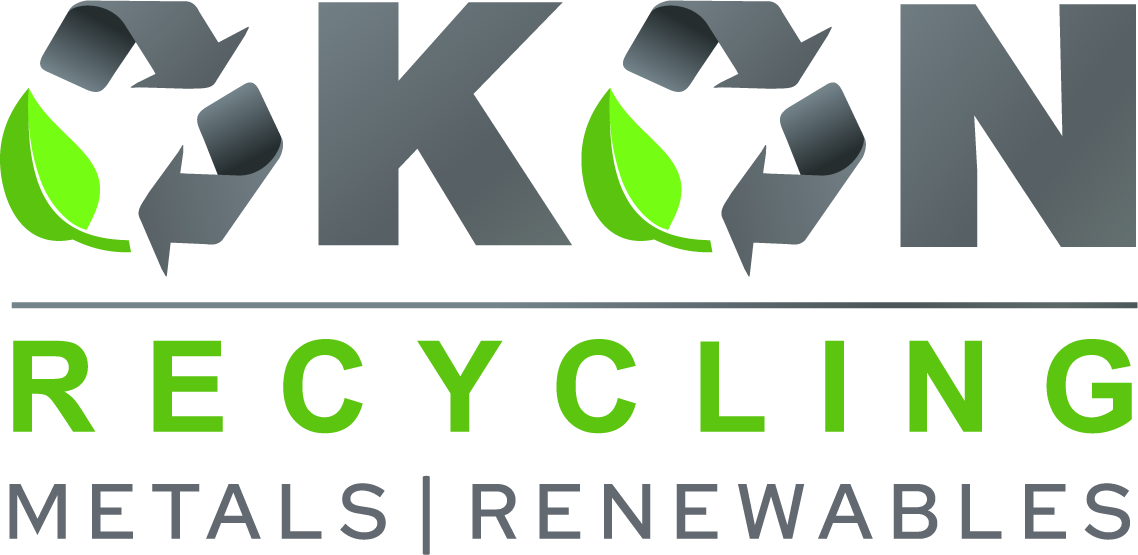5901 Botham Jean Blvd, Dallas, TX 75215
Challenges in Rare Metal Recycling
February 20, 2025Imagine a world where electric car batteries could be infinitely recycled, or where the precious metals in your old laptop could find new life in tomorrow’s solar panels. It’s an enticing vision, but the reality is more complex. Recycling rare metals is a puzzle that challenges even the brightest minds.
Why is recycling these valuable materials so challenging? Rare metals are often used in tiny amounts, scattered throughout our devices. Extracting them is akin to finding a needle in a haystack—if that needle were microscopic and welded to the hay. Electric car batteries, for instance, contain rare metals that are expensive and environmentally unfriendly to obtain, yet incredibly difficult to recycle.
The challenges extend beyond the technical. Economic barriers make many potential recycling processes financially unfeasible. It’s a classic catch-22: we need efficient recycling to secure our resources, but developing those processes requires significant investment with uncertain returns.
The stakes couldn’t be higher. As we race towards a greener future, the demand for rare metals in renewable energy systems and electric vehicles is skyrocketing. The irony is that our quest for sustainability could be undermined by the very resources meant to power it. Efficient recycling is becoming a critical component of our environmental strategy.
Overcoming Technical Obstacles in Rare Metal Recycling

Recycling rare earth metals (REMs) presents significant technical challenges that researchers and industry professionals are diligently working to overcome. As demand for these critical materials continues to rise due to their essential role in modern technologies, the need for efficient and cost-effective recycling methods has never been more pressing.
A primary hurdle in REM recycling is developing advanced separation technologies. Unlike more common metals, rare earths are often found in minute quantities within complex products, making their extraction and isolation formidable tasks. Current separation methods are often costly and energy-intensive, limiting their economic viability on a large scale.
Hydrometallurgical processes, which use aqueous chemistry to recover metals, have shown promise in rare earth recycling. However, these methods can generate significant waste and consume large quantities of energy. Researchers are exploring innovations in chemical and physical separation techniques to improve the efficiency and yield of REM recycling processes.
Innovative Approaches to Rare Earth Separation
Several cutting-edge technologies are being developed to address the challenges of rare earth metal separation:
1. Advanced Electrochemical Methods: Scientists are investigating electrochemical processes that offer precise and efficient ways to recover REMs from electronic waste and other sources. These methods have the potential for reduced environmental impact compared to traditional chemical processes.
2. Molten Salt Extraction: Researchers have explored using molten salts to extract rare earth elements from magnets and other end-of-life products. This approach shows promise for its ability to selectively separate different rare earth elements with high efficiency.
3. Bioleaching Techniques: Innovative approaches using microorganisms to extract rare earth elements are being studied. These biological methods could offer a more environmentally friendly alternative to traditional chemical extraction processes.
Overcoming Economic Barriers
The economic viability of rare earth metal recycling remains a significant challenge. Fluctuating market prices of REMs can impact the profitability of recycling operations, making it difficult for companies to invest in new technologies and infrastructure. To address this, governments and industry leaders are exploring various strategies:
1. Research Funding: Increased investment in research and development is crucial for advancing REM recycling technologies. Public-private partnerships and government grants are helping to drive innovation in this field.
2. Policy Support: Implementing supportive regulatory frameworks and incentives can encourage the adoption of rare earth recycling practices by businesses and industries. This may include tax credits for companies investing in recycling technologies or mandates for using recycled materials in certain products.
3. Circular Economy Integration: By embracing circular economy principles, industries can extend the lifecycle of rare earth metals and reduce the need for virgin material extraction. This approach not only improves sustainability but can also enhance long-term economic viability.
Future Outlook
As technological advancements continue, the recycling of rare earth metals is poised to become more efficient and economically viable. The development of automated sorting systems, improved chemical processes, and AI-driven optimization of recycling operations are all contributing to a more sustainable future for rare earth metal management.
While challenges remain, progress in overcoming technical obstacles in rare metal recycling is encouraging. Moving forward, collaboration between researchers, industry leaders, and policymakers will be crucial in creating a robust and sustainable rare earth recycling ecosystem that can meet the growing demands of our technology-driven world.
Economic Factors Impacting Rare Metal Recycling

The recycling of rare earth metals (REMs) presents both challenges and opportunities in the rapidly evolving technological landscape. While crucial for many advanced technologies, the economics of recycling them can be daunting.
A primary hurdle facing the REM recycling industry is the fluctuating nature of metal prices. As experts point out, market volatility can significantly impact the economic viability of recycling efforts. When prices dip, it becomes less financially attractive to invest in recycling infrastructure and technologies.
The high initial investments required for recycling infrastructure pose another substantial economic challenge. Advanced technologies and specialized equipment necessary for efficient REM extraction and processing can be prohibitively expensive. This financial barrier often deters potential investors, particularly in developing countries where capital may be scarce.
Government Incentives: A Potential Game-Changer
Government support and incentives may play a crucial role in overcoming these economic hurdles. The recent passage of the Inflation Reduction Act (IRA) in the United States provides an interesting case study in promoting recycling through incentives rather than mandates.
The IRA includes several provisions that directly incentivize recycling. For instance, it expands an existing investment tax credit program, allowing qualifying entities to write off up to 30% of their capital expenditures in facilities that recycle certain types of environmental technologies, including critical minerals.
Additionally, the Act creates a new advanced manufacturing production credit for components recycled within the United States. These incentives aim to stimulate investment in recycling technologies and infrastructure without imposing rigid mandates that could stifle innovation.
The Role of Public-Private Partnerships
Collaboration between public institutions, private companies, and research organizations can drive innovation and development in REM recycling. By pooling resources and expertise, these partnerships can help overcome the high costs associated with developing and implementing new recycling technologies.
For example, the European Union has funded several projects aimed at improving REM recycling, such as the REE4EU project. This initiative explores innovative methods for recovering rare earth elements from waste materials, demonstrating how targeted investment can spur technological advancements in the field.
The Long-Term Economic Perspective
While the initial costs of investing in REM recycling may be high, the long-term economic benefits could be substantial. As natural reserves of these metals become scarcer and more expensive to extract, recycling could become increasingly cost-effective. Moreover, developing a robust REM recycling industry can create jobs and stimulate economic growth in high-tech and green technology sectors.
By addressing the economic challenges through a combination of government incentives, public-private partnerships, and long-term strategic planning, the rare metal recycling industry can overcome its current hurdles and play a crucial role in securing a sustainable supply of these vital resources for future generations.
Regulatory Framework and Environmental Considerations

The rare metal recycling sector faces a complex web of regulatory challenges and environmental concerns. As governments worldwide recognize the critical importance of these resources, there is a growing push to establish comprehensive policy frameworks to effectively govern this industry. These regulations must balance promoting recycling practices with safeguarding the environment from potential negative impacts.
One primary regulatory hurdle is the lack of standardized policies across different regions. This inconsistency can lead to confusion for recycling companies operating internationally and potentially create exploitable loopholes. To address this, greater international cooperation is needed to develop cohesive regulatory approaches.
Key Regulatory Challenges
The rare metal recycling industry faces several regulatory challenges that demand attention:
- Absence of uniform classification systems for rare metals and their waste streams
- Inadequate tracking mechanisms for the lifecycle of rare metal-containing products
- Varying standards for recycling processes and environmental safeguards across jurisdictions
- Insufficient incentives for manufacturers to design products with recycling in mind
- Complexities in transboundary movement of rare metal waste due to differing regulations
Addressing these challenges requires a concerted effort from policymakers, industry stakeholders, and environmental experts. The goal is to create a regulatory framework that facilitates efficient recycling while ensuring environmental protection throughout the process.
Environmental Considerations in Rare Metal Recycling
While recycling rare metals is generally more environmentally friendly than primary mining, the process itself is not without risks. Policymakers must consider these factors when crafting regulations:
Firstly, extracting rare metals from end-of-life products often involves complex chemical processes that can release harmful substances if not properly managed. For example, the use of strong acids in hydrometallurgical processes must be strictly controlled to prevent soil and water contamination.
Secondly, energy consumption in rare metal recycling can be significant, contributing to greenhouse gas emissions. Research indicates that while recycling generally reduces fossil fuel energy usage compared to primary mining, there is room for improvement in energy efficiency.
Lastly, the transportation of rare metal waste to recycling facilities has its own environmental footprint. Regulations should encourage the development of local recycling infrastructure to minimize these impacts.
Towards a Sustainable Regulatory Framework
To create effective regulations for the rare metal recycling sector, policymakers should consider the following approaches:
- Implement extended producer responsibility (EPR) schemes to incentivize manufacturers to design products for easier recycling
- Establish clear guidelines for the safe handling and processing of rare metal waste
- Develop standardized labeling systems for products containing rare metals to facilitate proper end-of-life management
- Invest in research and development of more environmentally friendly recycling technologies
- Create financial incentives for companies that adopt best practices in rare metal recycling
International cooperation is crucial in addressing the global nature of rare metal supply chains. Organizations like the United Nations Environment Programme (UNEP) can play a pivotal role in fostering dialogue and collaboration between nations to develop harmonized regulations.
Effective regulations are crucial for the rare metal recycling sector. By creating comprehensive policies that enhance recycling practices while minimizing environmental impacts, governments can ensure the sustainable management of these valuable resources. As the industry evolves, so must the regulatory framework, adapting to new technologies and emerging environmental challenges in this critical sector.
Conclusion: The Future of Rare Metal Recycling

The challenges of rare metal recycling are real but solvable through innovation, collaboration, and commitment. Okon Recycling is leading the way, utilizing advanced recovery techniques that maximize material reuse while minimizing environmental impact. Their work demonstrates how AI-powered sorting and chemical recycling can redefine sustainability in the industry.
Success in rare metal recycling requires a joint effort—from manufacturers designing recyclable products to consumers participating in recycling programs and policymakers shaping sustainable regulations. Together, we can establish a true circular economy that conserves resources and drives economic growth.
With technological advancements and growing awareness, the future of rare metal recycling is bright. These innovations promise greater efficiency, reduced waste, and a greener planet. But progress depends on action—whether by businesses implementing sustainable solutions, governments enforcing responsible policies, or individuals making eco-conscious choices.
The future is in our hands. Support Okon Recycling and be part of the shift toward a sustainable, resource-efficient world. To learn more about their innovative recycling solutions, call 214-717-4083 today. Let’s turn challenges into opportunities for a cleaner, more prosperous future.
